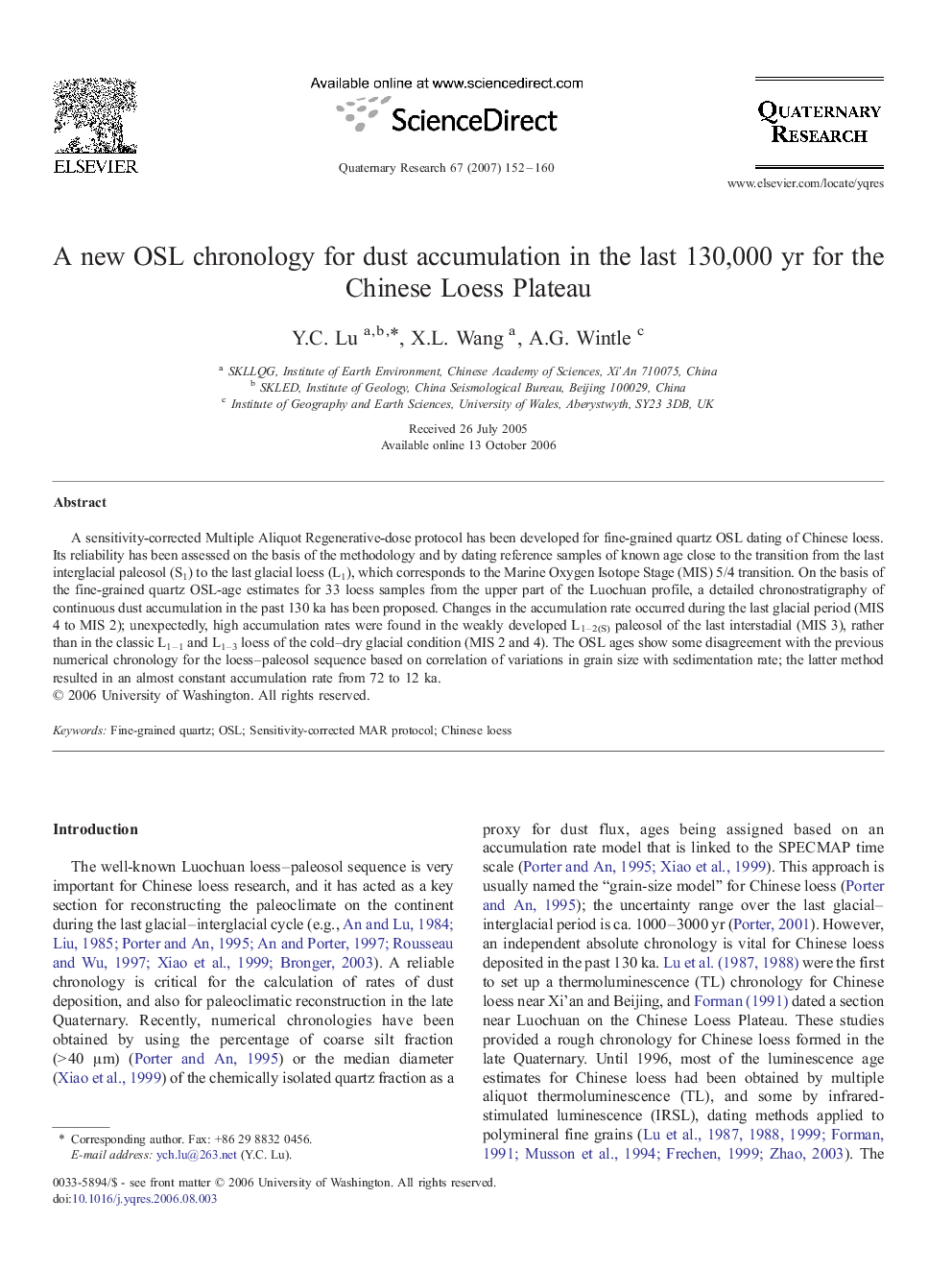| Article ID | Journal | Published Year | Pages | File Type |
|---|---|---|---|---|
| 1045638 | Quaternary Research | 2007 | 9 Pages |
A sensitivity-corrected Multiple Aliquot Regenerative-dose protocol has been developed for fine-grained quartz OSL dating of Chinese loess. Its reliability has been assessed on the basis of the methodology and by dating reference samples of known age close to the transition from the last interglacial paleosol (S1) to the last glacial loess (L1), which corresponds to the Marine Oxygen Isotope Stage (MIS) 5/4 transition. On the basis of the fine-grained quartz OSL-age estimates for 33 loess samples from the upper part of the Luochuan profile, a detailed chronostratigraphy of continuous dust accumulation in the past 130 ka has been proposed. Changes in the accumulation rate occurred during the last glacial period (MIS 4 to MIS 2); unexpectedly, high accumulation rates were found in the weakly developed L1–2(S) paleosol of the last interstadial (MIS 3), rather than in the classic L1–1 and L1–3 loess of the cold–dry glacial condition (MIS 2 and 4). The OSL ages show some disagreement with the previous numerical chronology for the loess–paleosol sequence based on correlation of variations in grain size with sedimentation rate; the latter method resulted in an almost constant accumulation rate from 72 to 12 ka.
